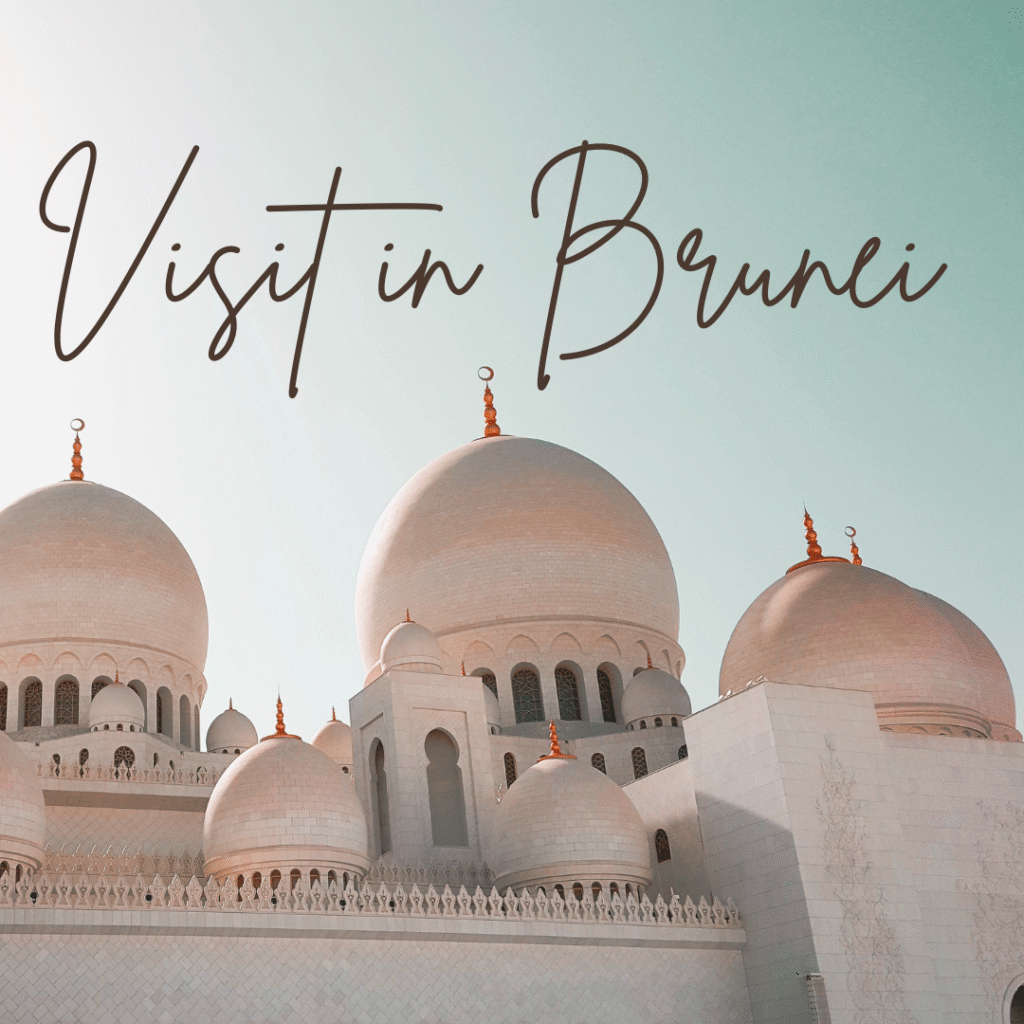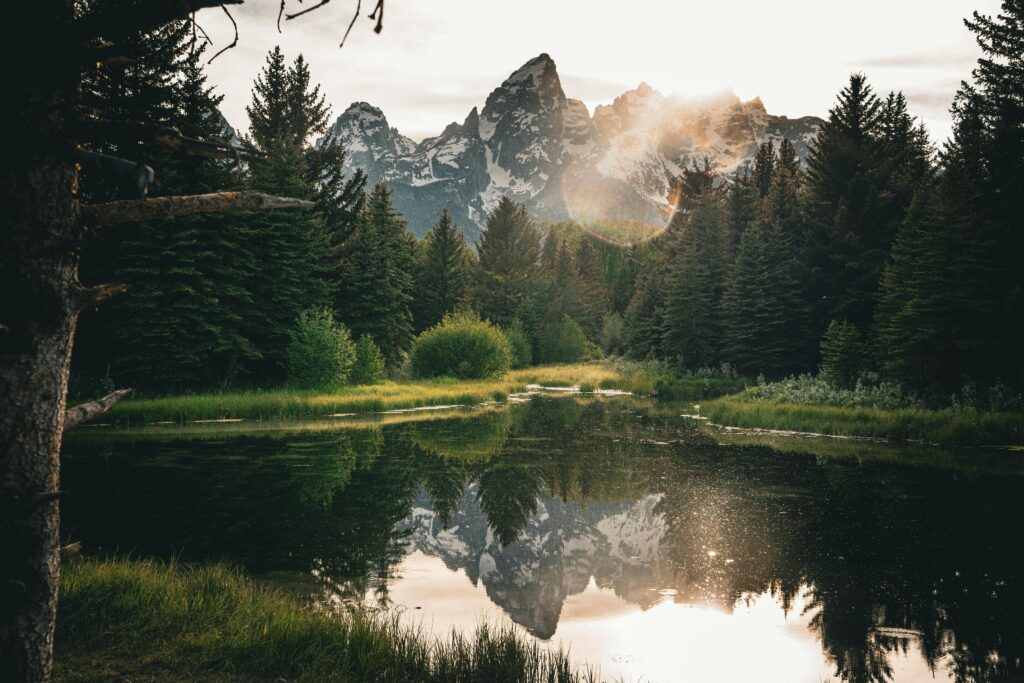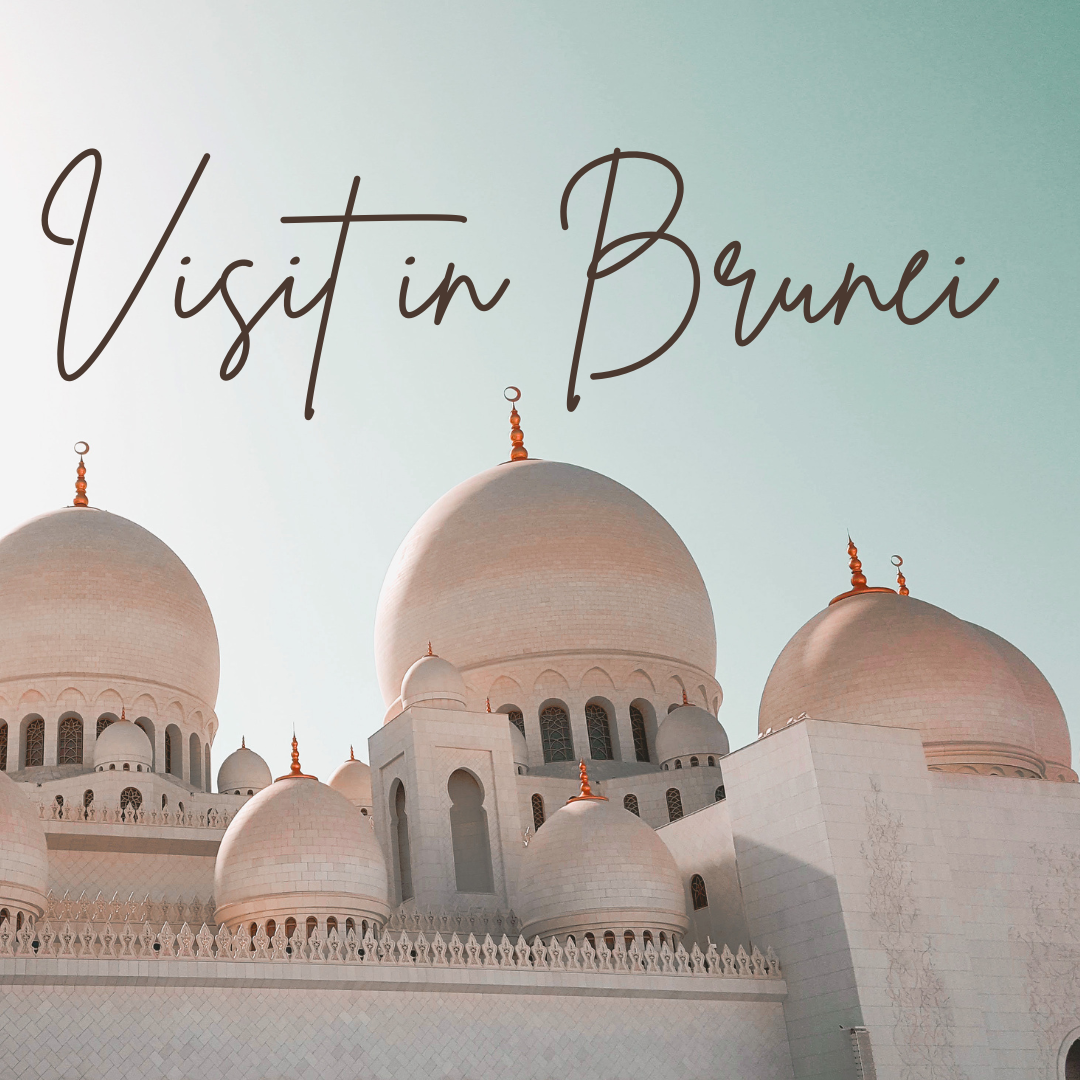Often overlooked by its neighbors in Southeast Asia is Brunei Darussalam, a tiny yet luxurious country on the island of Borneo. However, beyond its reserved demeanor is a region with a deep Islamic history, unspoiled rainforests, and striking architecture. Brunei, renowned for its oil and gas wealth, boasts some of the region’s cleanest streets, largest mosques, and most hospitable citizens. Brunei has a lot to offer, whether you’re a culture vulture, an adventurer, or someone looking for peace. A carefully curated list of Brunei’s top tourist destinations is provided below to ensure you experience the spirit of this peaceful royal family.

Mosque of Omar Ali Saifuddien
The Omar Ali Saifuddien Mosque, one of Brunei’s most iconic structures, is a testament to the Islamic faith and the nation’s rich architectural heritage. This mosque, completed in 1958 and named after the 28th Sultan of Brunei, combines elements of Italian and Mughal architecture. It has a ceremonial barge floating in a man-made lake, Italian marble minarets, and a golden dome that rises 52 meters. At sunset, when light gleams brilliantly off the ocean, the mosque is charming. Outside of prayer hours, non-Muslim guests are welcome and are allowed to attend the mosque, provided they wear modest clothing. The magnificent lights and soft flooring enhance its tranquil atmosphere.
Water Village, or Kampong Ayer
Often referred to as the “Venice of the East,” Kampong Ayer is a large water settlement situated on stilts along the Brunei River. Approximately 30,000 people are living in this centuries-old community, which features wooden homes, businesses, mosques, and schools connected by a maze of wooden pathways. A distinctive look into traditional Bruneian life may be had by taking a boat trip around Kampong Ayer. To learn more about the village’s history and preservation efforts, you can also visit the Kampong Ayer Cultural and Tourism Gallery. It’s a beautiful fusion of custom and courage in the face of change.
The Royal Palace, or Istana Nurul Iman
The Sultan of Brunei’s formal residence, Istana Nurul Iman, which translates to “Palace of the Light of Faith,” is the largest residential palace in the world. During the annual Hari Raya Aidilfitri festivities, the palace opens for a few days, offering tourists a glimpse of its magnificence, even though it is not accessible to the public throughout the year. The palace is the epitome of luxury, featuring over 1,700 apartments, dining areas, and a mosque that can accommodate up to 1,500 people. The golden domes peaking above the trees is a sight in and of itself, even whether seen from a distance or while on a river trip.
The Mosque of Jame’ Asr Hassanil Bolkiah
Another architectural wonder is the Jame’ Asr Hassanil Bolkiah Mosque, Brunei’s largest mosque. The mosque, constructed in 1992 to mark the 25th anniversary of the Sultan’s rule, features 29 golden domes, symbolizing that the present Sultan is the 29th monarch. Its exquisitely designed gardens and impressive interiors, which include elaborate tilework, chandeliers, and spacious prayer rooms, are open to visitors for exploration. The mosque’s illumination against Bandar Seri Begawan’s cityscape is stunning at night.
The National Park of Ulu Temburong
Ulu Temburong National Park is a must-see destination for outdoor enthusiasts. Part of the Heart of Borneo conservation program, this protected rainforest region spans approximately 550 square kilometers and is accessible only by boat. It is situated in the Temburong District. The overhanging walkway, which rises above the jungle, provides expansive views of the unspoiled rainforest and is the main attraction here. River tubing, jungle trekking, and waterfall trips are everyday activities on guided trips. Numerous flower and fern species, as well as animals such as gibbons and these birds, can be found in the park’s pristine habitat.

Museum of Royal Regalia
Visiting the Royal Regalia Museum is essential to understanding Brunei’s monarchy and cultural heritage. This museum in the capital is home to an extensive collection of ancient royal artifacts, including royal chariots, regalia used at the coronation of the Sultan, and gifts from international leaders. The structure itself is impressive, including polished marble interiors and a golden dome. Photography is permitted in some places, and admission is free. It sheds a lot of light on the luxuriousness and traditions of the Bruneian royal family.
Recreational Park Tasek Lama
Tasek Lama Recreational Park offers a refreshing escape into nature and is just a short stroll from Bandar Seri Begawan’s downtown area. This park is well-liked by people for morning walks, as it features jogging tracks, fitness stations, and a small yet charming waterfall. The paths are perfect for casual walking or family activities, as they are shaded and well-signposted. Among the park’s diverse plant life, birdwatchers will also appreciate the opportunity to see a variety of native bird species.
Park Jerudong
Jerudong Park, which was once Southeast Asia’s largest and most expensive amusement park, has undergone extensive renovations. It features several attractions, including bumper cars, go-karts, roller coasters, and a musical fountain display, although it may not be as impressive as Disneyland. The park is perfect for families with kids and is well-maintained. Weekends are often filled with special events, food stalls, and cultural performances. It’s a pleasant and healthy spot to unwind, especially when the nights cool down.
Brunei’s Empire
The Empire Brunei is a destination in its own right, even if it is a luxury resort. This expansive waterfront complex has luxurious interiors, a world-class golf course, private beaches, and a movie theater. You may explore the hotel’s public spaces, eat at one of its restaurants, or stroll around its lovely grounds even if you aren’t staying there. The Empire is renowned for welcoming royal families, leaders, and celebrities from all around the world. It’s a great illustration of Brunei’s modest but significant riches and is well worth a visit to witness another aspect of the nation’s luxury.
Kianggeh Market, or Tamu Kianggeh
Visit Tamu Kianggeh, a traditional open-air market along the Kianggeh River, to get a taste of local life. Here, sellers offer a diverse range of goods, including handcrafted crafts, herbal remedies, and fresh and regional food. The market is lively in the mornings, offering an opportunity to mingle with friendly locals and try Bruneian specialties, such as a sticky sago dish or kapu. It’s a fantastic location for genuine Bruneian experiences and souvenirs.
Seri Kenangan Beach, or Pantai Seri Kenangan
Nestled between the Tutong River and the South China Sea, Pantai Seri Kenangan is a serene beach in the Tutong District, renowned for its unique topography. The beach is perfect for a peaceful picnic, a stroll at sunset, or a weekend escape since it is hardly crowded. The beach area is lined with local food vendors offering grilled fish, fresh coconut water, and traditional snacks. Because of its peaceful views, it is also a favored spot for local photographers.
The Forest Reserve of Bukit Patoi
Bukit Patoi is a component of the Peradayan Forest Reserve and is situated in the Temburong District. The peak of Bukit Patoi, accessible via a modest 1.6 km walk, offers incredible views over the surrounding areas of Sarawak, Malaysia, as well as the wooded hills. For those who like trekking and the outdoors, it is just as enjoyable as Ulu Temburong, albeit being less visited. You could even see some long-tailed macaques along the journey, along with unusual flora and insects.

In conclusion
Despite its small size, Brunei offers a diverse range of natural beauty, spirituality, and culture. Brunei’s genuineness and tranquility are what makes it so alluring, whether you’re exploring its historic rainforests, boating the waterways of Kampong Ayer, or admiring the golden domes of its mosques. It’s a place that rewards the interested tourist with tales, encounters, and scenery that last long after you’ve left its borders. Brunei stands out as a destination where culture and environment coexist in harmony, with a shift in preferences toward environmentalism and meaningful discovery.

Leave a Reply